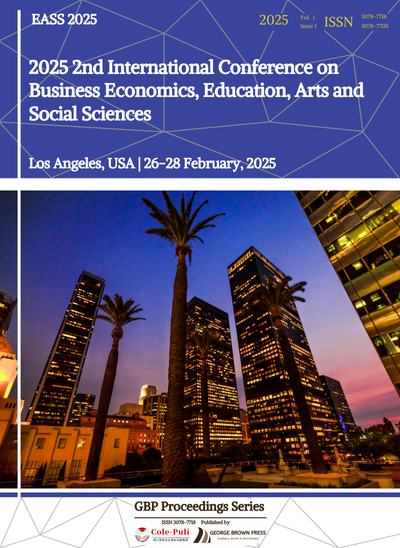Comparing Trump's and Harris's Last Campaign Speeches from a Critical Discourse Perspective
DOI:
https://doi.org/10.71222/nxkr6s69Keywords:
critical discourse analysis, Trump and Harris’s speech, politics, similarities, differencesAbstract
As the US presidential election has been held nearly 60 times, this paper aims to compare the application of Critical Discourse Analysis (CDA) in the final campaign speeches of Trump and Harris. It examines the discourse strategies used by politicians and how they shape public perception, as well as the role of voter engagement within the historical and institutional framework of the American democratic system. This study serves as a representative example of applying CDA theory to political discourse in the US election. By studying this paper, students learning English as a second language can gain insights into how discourse reflects power relations in different contexts, enhancing their ability to use English in discussions on societal topics. In an educational setting, the CDA methods introduced here differ from traditional grammar-focused approaches, immersing students in contextual learning and encouraging them to analyze how language constructs meaning and influences communication.
References
1. G. Weiss and R. Wodak, Critical Discourse Analysis. New York, NY: Palgrave Macmillan, 2007, doi: 10.1057/9780230288423.
2. E. N. Kadim, "A critical discourse analysis of Trump's election campaign speeches," Heliyon, vol. 8, no. 4, 2022, doi: 10.1016/j.heliyon.2022.e09256.
3. M. KhosraviNik, "Critical discourse analysis, power, and new media (digital) discourse," in Why Discourse Matters: Negotiating Identity in the T World, 2014, pp. 283–301. ISBN: 9781433123900.
4. Y. Khajavi and A. Rasti, "A discourse analytic investigation into politicians’ use of rhetorical and persuasive strategies: The case of US election speeches," Cogent Arts & Humanities, vol. 7, no. 1, 1740051, 2020, doi: 10.1080/23311983.2020.1740051.
5. H. R. Rahro, P. Jebelli, and F. Azimfard, "Critical discourse analysis of presidential candidates TV debates between Ebrahim Raisi and Abdolnaser Hemmati in Iran’s 2021 presidential election," Social Sciences & Humanities Open, vol. 10, 101040, 2024, doi: 10.1016/j.ssaho.2024.101040.
6. C. Zhu, "Metaphors Trump lives by: A critical metaphor analysis of Trump’s statements in 2020 presidential election de-bates," International Journal of English Linguistics, vol. 11, no. 2, pp. 150–162, 2021, doi: 10.5539/ijel.v11n2p150.
7. V. A. Schmidt, "Britain-out and Trump-in: A discursive institutionalist analysis of the British referendum on the EU and the US presidential election," Review of International Political Economy, vol. 24, no. 2, pp. 248–269, 2017, doi: 10.1080/09692290.2017.1304974.
8. J. Visser, B. Konat, R. Duthie, M. Koszowy, K. Budzynska, and C. Reed, "Argumentation in the 2016 US presidential elections: Annotated corpora of television debates and social media reaction," Language Resources and Evaluation, vol. 54, no. 1, pp. 123–154, 2020, doi: 10.1007/s10579-019-09446-8.
9. K. Germadnik, "Use of pronouns in political discourse: A study of the 2016 US presidential election debate and the 2019/2020 Croatian presidential election debate," Ph.D. dissertation, Univ. of Zagreb, Faculty of Humanities and Social Sciences, De-partment of English Language and Literature, 2021. [Online]. Available: https://urn.nsk.hr/urn:nbn:hr:131:788031. [Accessed: Jan. 19, 2025].
10. I. Indriana and W. M. Muttaqin, "Critical discourse analysis on Donald Trump’s strategy against his addressee to win the US election," IJOTL-TL: Indonesian Journal of Language Teaching and Linguistics, vol. 4, no. 1, pp. 27–38, 2019, doi: 10.30957/ijoltl.v4i1.554.
11. S. Kanwal and M. I. M. García, "Representation of gender through framing: A critical discourse analysis of Hillary Clinton’s selected speeches," International Journal of English Linguistics, vol. 9, no. 2, pp. 321–331, 2019, doi: 10.5539/ijel.v9n2p321.










